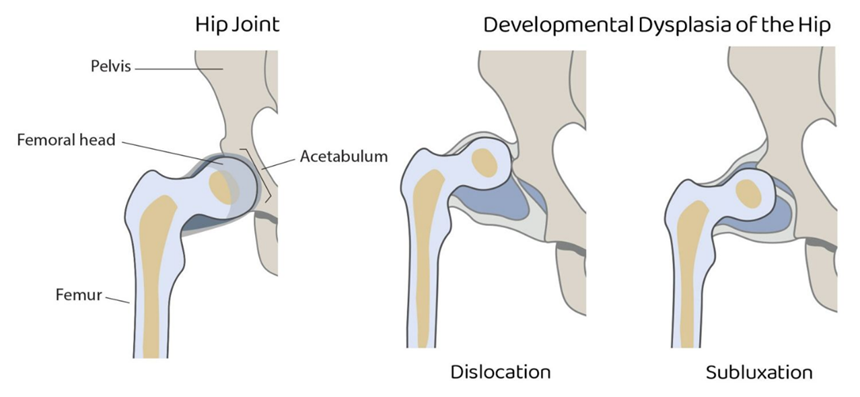Which of the following would be the most appropriate play activity for a 3-year-old in a spica cast, considering both safety and development?
Marbles
Watching a movie
Game of checkers
Playing with a toy telephone
The Correct Answer is D
Choice A reason:
Marbles are not a safe play activity for a 3-year-old in a spica cast. Marbles are small and can pose a choking hazard. Additionally, playing with marbles requires fine motor skills and movement that may be restricted by the cast.
Choice B Reason:
Watching a movie is a safe activity but does not provide developmental benefits. While it can keep the child entertained, it does not engage the child in active play or promote cognitive and motor development.
Choice C Reason:
A game of checkers may be too advanced for a 3-year-old. It requires understanding of rules and strategic thinking, which may be beyond the developmental stage of a child this age. Additionally, it may not be engaging enough to hold the child’s attention.
Choice D Reason:
Playing with a toy telephone is an appropriate activity for a 3-year-old in a spica cast. It is safe and can be done while the child is in a stationary position. This activity encourages imaginative play and can help with language development and social skills.
Nursing Test Bank
Naxlex Comprehensive Predictor Exams
Related Questions
Correct Answer is D
Explanation
Choice A reason:
Bacteriuria, or the presence of bacteria in the urine, is not a primary clinical manifestation of acute renal failure. While facial edema can occur due to fluid retention, bacteriuria is more commonly associated with urinary tract infections. Acute renal failure primarily affects the kidneys’ ability to filter waste and regulate fluid and electrolytes, leading to symptoms such as oliguria and hypertension.
Choice B reason:
Hematuria, or blood in the urine, can be a symptom of various kidney conditions, but it is not a primary manifestation of acute renal failure1. Pallor, or paleness, can occur due to anemia, which may be a secondary complication of chronic kidney disease rather than acute renal failure. The primary symptoms of acute renal failure are related to the sudden decline in kidney function, such as oliguria and hypertension.
Choice C reason:
Proteinuria, or the presence of excess protein in the urine, is more commonly associated with chronic kidney disease or nephrotic syndrome rather than acute renal failure. Muscle cramps can occur due to electrolyte imbalances, but they are not primary manifestations of acute renal failure. The primary symptoms of acute renal failure include oliguria and hypertension.
Choice D reason:
Oliguria, or reduced urine output, and hypertension, or high blood pressure, are primary clinical manifestations of acute renal failure. Acute renal failure results in a sudden decline in kidney function, leading to the retention of waste products and fluids, which can cause oliguria and hypertension. These symptoms are key indicators of acute renal failure and require prompt medical attention.
Correct Answer is ["A","B","C","E"]
Explanation
The correct answer is a) Positive Ortolani click, b) Unequal gluteal folds, c) Trendelenburg sign, and e) Telescoping of the affected limb.
Choice A reason:
A positive Ortolani click is a clinical manifestation of developmental dysplasia of the hip (DDH). The Ortolani maneuver is used to detect hip dislocation or subluxation in infants. When the hip is abducted and gentle pressure is applied to the proximal thigh from behind, a palpable “clunk” is noticed as the femoral head relocates into the acetabulum. This indicates hip instability, which is a characteristic of DDH.

Choice B reason:
Unequal gluteal folds are another clinical manifestation of DDH. Asymmetrical gluteal creases can suggest hip dysplasia in infants. This is because the dislocation or subluxation of the hip can cause one leg to appear shorter than the other, leading to uneven gluteal folds.
Choice C reason:
The Trendelenburg sign is a clinical test used to assess the integrity and strength of the hip abductor muscles, particularly the gluteus medius and gluteus minimus. A positive Trendelenburg sign usually indicates weakness in these muscles, which can be associated with hip abnormalities such as congenital hip dislocation3. In DDH, the hip instability can lead to a positive Trendelenburg sign.
Choice D reason:
A negative Babinski sign is not a clinical manifestation of DDH. The Babinski reflex is a normal reflex in infants up to 2 years old, where the big toe moves upward and the other toes fan out when the sole of the foot is stroked. A negative Babinski sign would indicate the absence of this reflex, which is not related to DDH.
Choice E reason:
Telescoping of the affected limb is a clinical manifestation of DDH. In a child with DDH, the hip socket is shallow, and the head of the femur may slip in and out, leading to a telescoping effect. This means the femoral head can move further out of the socket, causing the limb to appear shorter or longer depending on the position.
Whether you are a student looking to ace your exams or a practicing nurse seeking to enhance your expertise , our nursing education contents will empower you with the confidence and competence to make a difference in the lives of patients and become a respected leader in the healthcare field.
Visit Naxlex, invest in your future and unlock endless possibilities with our unparalleled nursing education contents today
Report Wrong Answer on the Current Question
Do you disagree with the answer? If yes, what is your expected answer? Explain.
Kindly be descriptive with the issue you are facing.
